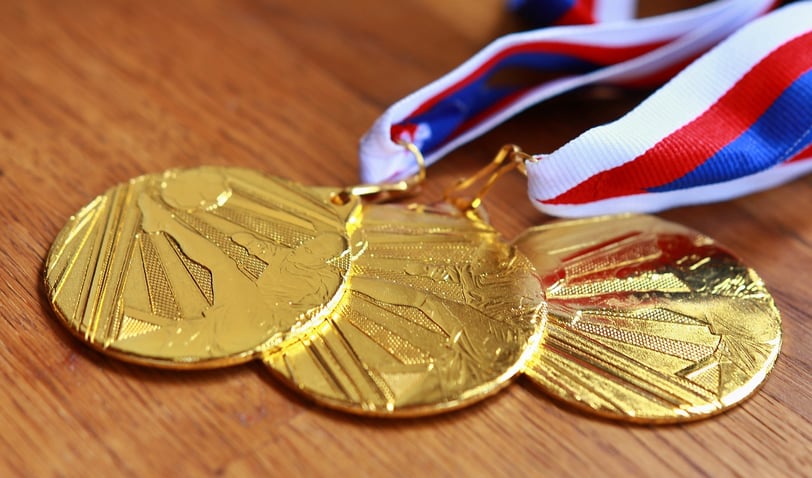Half-Assed Training
You don't need to go "all in"


I’m a sucker for the Olympics.
As a little kid, I watched the games with my father, who explained that even though the competitors made it look easy, what they were doing was actually extremely difficult. They were the best of the best, testing the limits of human athletic performance. Fifty years later, I still stay up way too late glued to the TV for that two-week period, marveling as the finest athletes in the world display extraordinary strength, speed, power, skill, and grace on the diving board, the soccer pitch, the running track, the balance beam, and so on.
These superstars may have been blessed with superior genetics, but they also worked brutally hard to get where they are. Katie Ledecky hits the pool ten times a week for two hours a pop and adds full-body strength workouts five days a week. Simone Biles trains for seven hours a day, six days a week with a regimen including not only gymnastics moves, but also hours of biking, swimming, and core strength work. Sha’Carri Richardson spends many hours each week on the track — and many more in the gym doing squats, deadlifts, and bench presses.
You don’t train that hard, that often, without picking up some injuries along the way. In March 2023, Brody Malone slipped off the high bar, broke his tibia, and tore several knee ligaments. After multiple surgeries, weeks of bedrest, and relearning how to walk, Malone led the US Men’s Gymnastics Team last week to their first medal since 2008. Training that intensely also means precious little time and energy for family, job, or other hobbies.
These folks are ALL IN. And their accomplishments are riveting.
That level of commitment to physical excellence isn’t realistic or desirable for most of us, of course. We don’t have the time, energy, ambition, or — let’s face it — natural ability. Most of us accepted long ago that we will never be Olympians.
But it’s a bit harder to accept the messages we get every day that no matter how much we exercise, how well we eat, or how many bad habits we break, it will never be quite enough. There’s always something else to optimize if we want to be our best physical selves.
You cut back on your drinking? Kudos, but you should also nix the aspartame and add some quinoa and kimchi. You carved out the time for a walking program? Cool, but round it out with high intensity intervals and a flexibility routine, followed by an ice bath. You’re going to bed earlier? Bravo, but make sure to tape your mouth and check your Oura ring to see if you’re getting enough REM sleep. You’re considering weight training? Great, as long as your five-day-a-week plan includes upper and lower body strength, power, and mobility work across multiple rep ranges, with added balance and agility drills.
It’s exhausting trying to figure out all the protocols we’re told we should follow to better our bodies. We can quickly become demoralized and scrap the whole project.
Most of us don’t want to go “all in” on physical improvement. We’d rather play board games with our families, read The Women, binge “The Bear,” and scarf down some Oreos. And that’s fine. As one of my friends likes to say, “If it’s worth doing, it’s worth doing half-assed.” Taking small, commonsense steps toward reasonable goals may be healthier in the long run than driving yourself nuts trying to optimize every square inch of your life.
Don’t get me wrong: if you want to whole-ass your fitness, go right ahead. For some people, that sparks joy. But if it doesn’t, half-assed training is better than starting savage and flaming out fast — or, worse, allowing overwhelm to keep you from starting in the first place.
